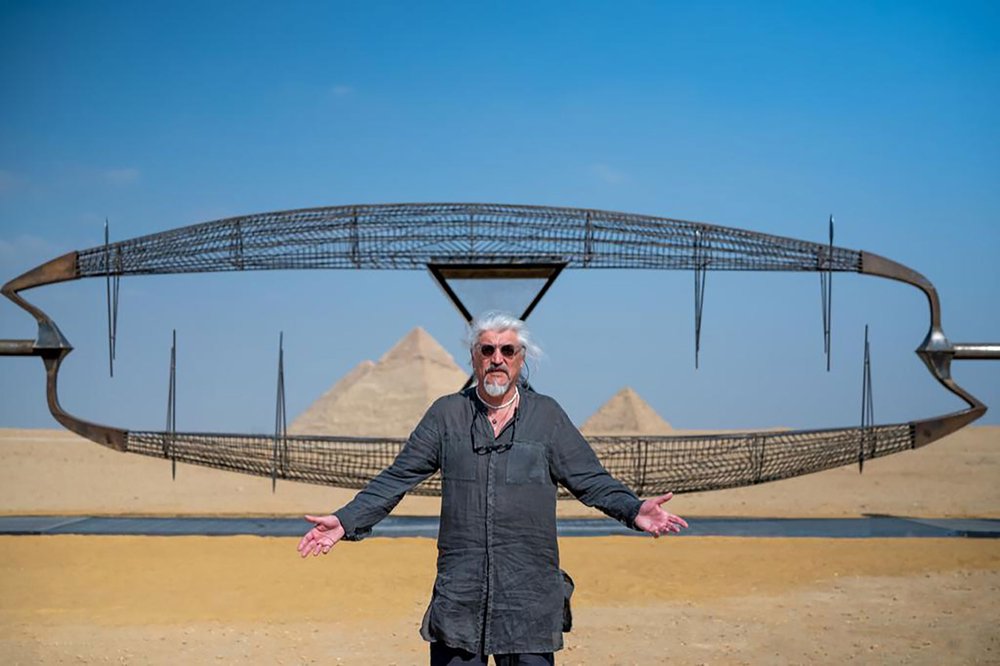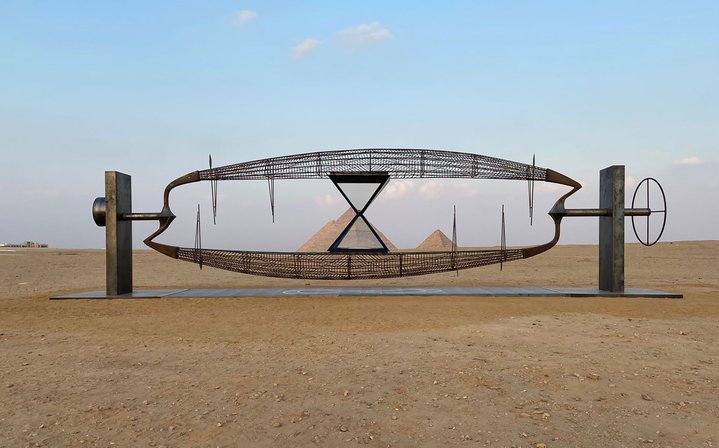Alexander Ponomarev: adventure in the egyptian desert

A Russian artist has created a kinetic installation with a philosophical twist in front of the Giza pyramids in Egypt
Museum halls are too cramped and narrow for Alexander Ponomarev (b. 1957), a Russian artist and former naval officer, who likes to think big. His daring performances have taken place in the ice-covered Arctic seas, where he organized the first ever Antarctic Biennale, and one of his best-known installations was the skeleton of a shipwreck erected amidst a Moroccan desert. Recently, Ponomarev created a kinetic installation for the fourth edition of the Art D’Égypte biennale in Cairo, ‘Forever is Now’, this year featuring both international and local artists. Titled ‘Ouroboros’, it stands in the open desert in front of the Pyramids of Giza. The 16-metre long work was inspired by the solar boats discovered by archaeologists in the secret chambers of Khufu’s pyramid. Another important source of inspiration was Ouroboros – a snake biting its own tail. This symbol of eternity was known in Egypt and other ancient cultures from time immemorial. A giant sandglass turned by the wind and facing the ageless pyramid lets the viewer discover a new, physical dimension of abstract notions of Time and Eternity. Sadly, the installation itself is short-lived. It will be dismantled once the Biennale ends in November. The work was created with the support of Moscow’s Surface Lab Art gallery.






